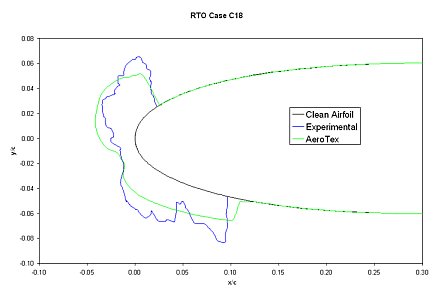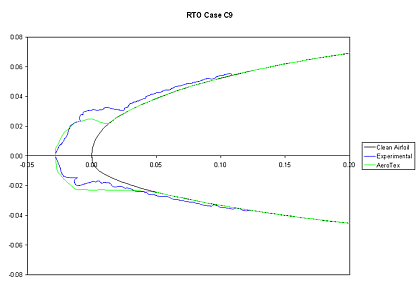IHB – Ice Heating Balance
Introduction
The IHB (Icing Heat Balance) code performs a steady-state thermal analysis on a heated, thin strip, structure in two-dimensions. The code performs a ‘Messinger’ type heat balance on the breeze surface, to calculate the local freezing fraction and surface temperature. The local ice growth rate (mm/min) is then calculated from the local freezing fraction and the cloud water droplet impact rate. The ice growth rates are then extrapolated to the required time in icing and an ice profile is produced by growing the ice normal to the body surface. External heat (in Watts/m2) may be specified at various chord wise locations to simulate the heat input from an ice protection system, and the code will calculate whether ice still grows, the surface runs wet, or the water is fully evaporated. The code requires a user input file which specifies the distribution of water catch, heat transfer coefficient and surface pressure ratio or pressure coefficient.
Technical
The code has three primary modes of operation (run-type options). These are specified by the user in the input file using the parameter RTYPE. The currently accepted values are 0, 1 or 2. The following options are thus currently available;
RTYPE=0: This is an unheated ice accretion calculation, with strip heat conduction set by the strip thermal conductivity. It can be used to predict the ice shape, size and position on a 2D section of wing or rotor blade.
RTYPE=1. In this mode, the code calculates the amount of external heat input required locally to provide a uniform surface temperature of 0oC. It may be used to establish the likely minimum power density (W/m2) required to prevent ice from forming (to produce a running wet system).
RTYPE=-1. The code will calculate the anti-icing power to achieve a given surface state (running wet or fully evaporative). The user specifies an aft limit of protection on each of the upper and lower surfaces, and also the anti-icing protection system type; running wet, or fully evaporative. The code then calculates the heat input power required to produce a uniform surface temperature to achieve the desired state. For a running wet system, the user specifies the desired surface temperature and the code calculates the power required. For the fully evaporative option, the code also calculates the surface temperature required to achieve full evaporation of the runback water before the end of protection. This code functionality can be used in the preliminary design of new electrothermal ice protection systems
RTYPE=2. This option provides a simulation of an idealised electrothermal ice protection system (or hot-air system if the input distribution of Watt-density is known). The user specifies a number of heated zones and the heating intensity of each zone and the code calculates the surface temperature, ice growth rate (if appropriate), and surface water mass flow rate. When the latter is zero, the surface is dry (fully evaporative, or no water catch present).


